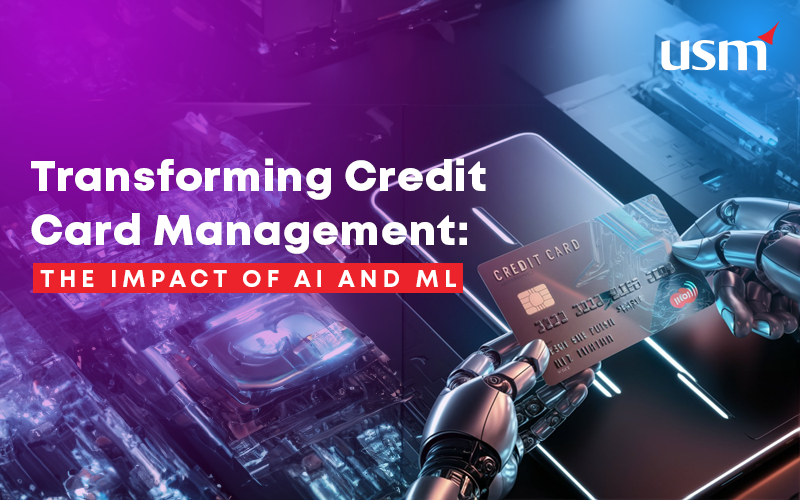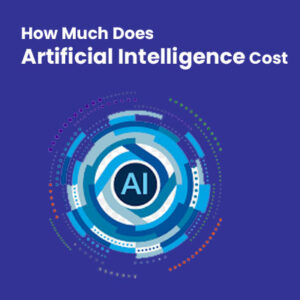Transforming Credit Card Management: The Impact of AI and ML
Transforming Credit Card Management: The Impact of AI and ML
The role of AI and ML in transforming credit risk management in banking
Credit-card fraud has been a prime challenge for customers and financial organizations in this digital age. Globally, more than $28 billion was lost last year from credit card fraud. It is going to rise in the future, and hence there is a need for robust risk management mechanisms.
Previously, risk in credit card portfolios was managed through a variety of manually developed procedures for fraud detection and prevention. However, traditional methods have become ineffective against today’s intelligent hacking methods.
Fortunately, the advent of AI and ML has transformed credit card risk management processes. These technologies process huge volumes of data and can effectively detect anomalies, mitigating threats. This technological shift shall create a better transaction security experience for customers through reduced false positives and smoother and safer transactions.
The article will discuss how AI and ML can solve traditional credit card risk management problems. We are also going to look into the different techniques used, the benefits of using AI and ML for credit card risk management, and some case studies with real-world examples.
An Overview of Credit Card Risk Management
It is the process of identifying, assessing, and mitigating the risks associated with credit card transactions. Therefore, this whole process can be regarded as paramount to protecting consumers and even financial institutions against fraudulent activities.
Traditionally, credit card risk management depended on rule-based systems and manual reviews. In the rule-based system, as the name implies, predefined criteria are used in the identification of risky transactions. For example, transactions exceeding a certain amount or originating from unusual locations raise red flags. While providing some form of security, these measures were typically inadequate to handle increasing volumes and sophistication in credit-card transactions.
This can often result in the generation of a lot of false positives by rule-based systems misinterpreting a legal transaction as fraud. This might anger customers and put additional workload on customer service. Further, fraudsters are continuously inventing new techniques that make it pretty hard for the static rule-based system to detect new threats.
The Role of AI and ML in Credit Card Risk Management
-
Transforming Risk Management
AI and ML have transformed credit card risk management with much more accurate, efficient, and dynamic approaches toward fraud detection and mitigation. These technologies use large datasets and complex algorithms that enable identifying trends and outliers in real time. This approach opens up avenues for proactive threat detection and response.
-
Real-Time Fraud Detection
AI and ML systems are very good at real-time fraud detection, for they continuously monitor transactions and user behavior. While traditional, rule-based approaches could not detect these newer styles of distributed fraud schemes, AI and ML adapt rapidly to new patterns of fraud once they appear. This will ensure that financial institutions are always one step ahead of fraudsters in the identification of suspicious activities before they can cause great damage.
-
Pattern Recognition and Anomaly Detection
The major strengths of AI and ML in risk management are their ability to identify complex patterns and detect anomalies indicative of fraudulent behavior. Such systems create baseline behaviors through the analysis of historical transaction data, user profiles, and contextual information. Deviations from these norms trigger alerts for further investigation. This level of precision helps in distinguishing genuine transactions from fraudulent ones, thus reducing the incidence of false positives.
-
Continuous Learning and Improvement
These AI and ML models learn from new data continuously, which can only improve their fraud detection capabilities over time. As more transactions are processed and different fraud scenarios unfold, these models will fine-tune their algorithms to be more accurate and efficient. This is an ongoing spiral of improvement, ensuring the risk management system will change as the landscape of fraud evolves.
-
Automation and Efficiency
AI and ML can substantially reduce the need for reviews subject to risk management by automating a number of aspects involved in this particular area. Automated systems can process volumes of data at lengths and speeds inconceivable to any human analyst, allowing for effective fraud detection in a timely manner. This not only improves operational efficiency but also frees human resources to deal with more complex and risky cases that require nuanced decision-making.
-
Integration with Existing Systems
AI and ML technologies can be combined with pre-existing frameworks of risk management, thereby delivering greater potential and effectiveness without requiring an overhaul in their entirety. Equally, this will give a financial institution a chance to utilize the current running infrastructure and receive all the benefits coming from advanced AI and ML-driven insights. The result is going to be an ultimately more solid, responsive system of risk management that is able to adapt itself to polished threats and challenges.
Key Challenges and Considerations To Overcome
While AI and ML have huge potential in credit card transaction risk management, there are also a number of pitfalls and issues that arise with their implementation. Bringing solutions to these problems will be key to maximizing the effectiveness of the technologies and their ethical working.
-
Data Privacy
Since AI and ML systems are data-driven, the door is also wide open to a number of potential data privacy and security issues. However, the financial institutions should be in a position to protect sensitive customer information and establish mechanisms of data collection, storage, and processing that consider applicable privacy regulations under GDPR and CCPA; this argues further that appropriate encryption methods, access controls for customers, and good anonymization techniques will be implemented accordingly.
-
Regulatory Compliance
One of the major challenges institutions face in implementing AI and ML is managing the complex landscape of financial regulations relevant to the use and processing of data. This requires stringent controls and the associated transparency expected by regulators. Hence, institutions will have to ensure compliance with these regulations, which may involve regular audits, documentation, and reporting of AI and ML models to regulatory authorities.
-
Implementation Barriers
AI and ML technologies can be resource-intensive to adopt. Some of the common challenges faced while implementing AI and ML include:
- High Costs: Setting up AI and ML infrastructures, software, and personnel with exceptionally high skills can be really resource-intensive.
- Technical Complexity: The development and maintenance of AI and ML systems require special knowledge and expertise that are often absent in some organizations.
- Integration problems: The overall incorporation of AI and ML into underpinning systems and workflows has proved to be quite problematic. Careful thought in planning and execution will be needed if the technology is to work seamlessly.
Real-time Case Studies and Real-World Examples
Real-world examples will attest to how AI and ML find practical applications in credit card risk management. Case studies will illustrate how financial institutions have tapped into such technologies to frustrate fraud, enhance security, and improve customer satisfaction.
Many of the leading financial institutions have included AI and ML within the risk management framework with quite excellent results:
- JPMorgan Chase: AI-driven systems for tracking and analyzing millions of transactions every day have been put in place. Its AI models detect fraudulent activities with high accuracy, reducing false positives drastically and increasing the security of overall transactions.
- HSBC: ML algorithms at HSBC enhance their capability for fraud detection. Analysis of the historical transaction data will help in discovering the spend pattern; therefore, these companies can ensure prevention and prediction accordingly. This proactive policy has caused a notable decrease in fraud-related losses.
USM Business systems is also a pioneer in AI-powered mobile app development fraud detection. We help you keep your and yours esteemed customers data privacy and financial safety through developing high-quality advanced credit risks management apps.
Conclusion
AI/ML-powered mobile app development for fraud detection is the best option in this digital age. These technologies provide better accuracy, real-time processing, cost efficiency, and an improved customer experience.
At the same time, all the challenges and considerations involved do not overshadow the bright future awaiting AI and ML in risk management. Only those financial institutions that embrace these technologies will adapt to the ever-changing landscape of credit card fraud and ensure safe and satisfied customers.






















